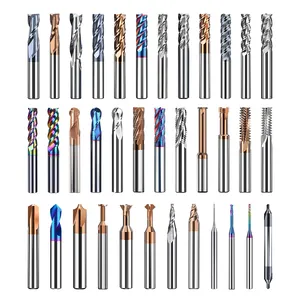

130in1 Precise Screwdriver Set Professional Magnetic Repair Tool Kit For Phone Computer PC Camera Watch Laptop

HUHAO 12.7mm Carbide Cutter Up Down Woodworking Compression Router Bit End Mill Cutting Tools CNC Wood





















Cobbler tools refer to the tools used for making, repairing, and maintaining shoes.
The functions of cobbler tools depend on the specific tool type. The cobbler hammer is used to strike shoes and nails. By applying force, users can use the hammer to drive nails into the sole or upper of the shoes, ensuring a secure fit. Pliers are used to grip, secure, and remove nails or other small objects. Nails are used to secure the sole or upper of shoes. Scissors are used to cut and trim materials on the shoe. Users can use scissors to trim excess material on the shoe, shaping it to the desired form and size. Sewing needles and sewing thread are used for hand-stitching shoes. Users can use them to repair damaged parts or perform other embellishments. In addition, sole repair tools also include sole knives, sole adhesives, sole repair patches, and so on.
Cobbler tools are suitable for the following individuals. Shoe repair tools are essential for cobblers who specialize in making, repairing, and maintaining shoes. Cobblers typically have professional skills and knowledge to use the tools for various shoe repairs and customizations. They can use cobbler tools to fix damaged shoes, replace soles, laces, etc., and ensure the comfort and quality of the shoes. For those who enjoy DIY projects and repairs, shoemaker tools can be valuable tools. They can use the tools to repair their shoes, engage in creative shoe modifications, or even make their shoes. For the collectors, they are interested in antique cobbler tools. They believe that the kind of cobbler tool is highly valuable. The vintage cobbler tools can showcase the historical and cultural aspects and possess unique appearances and designs.
When using shoemaking tools, it is important to keep the following points in mind. Firstly, always wear appropriate protective gear, such as gloves and safety goggles, to protect users from potential harm. Secondly, handle shoemaking tools with care and ensure a firm grip to prevent accidents or tool slippage. When selecting tools, choose the correct shoemaking tools that are suitable for the specific task at hand, as using the wrong tools may result in shoe damage or poor repairs. Additionally, use the tools for their intended purpose and avoid using shoemaking tools for other purposes to prevent damage or accidents. It is also important to master effective and safe techniques and skills for using each tool and seek guidance or training if necessary. Furthermore, ensure that the work area is clean and well-organized to prevent accidents and facilitate the use of tools and materials.